
Christian Gottfried Ehrenberg was a German naturalist, zoologist, comparative anatomist, geologist, and microscopist. Ehrenberg was an evangelist and was considered to be one of the most famous and productive scientists of his time.
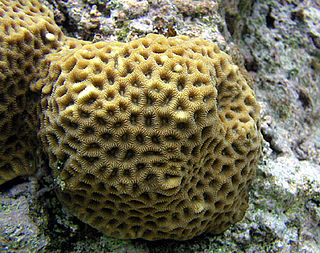
Brain coral is a common name given to various corals in the families Mussidae and Merulinidae, so called due to their generally spheroid shape and grooved surface which resembles a brain. Each head of coral is formed by a colony of genetically identical polyps which secrete a hard skeleton of calcium carbonate; this makes them important coral reef builders like other stony corals in the order Scleractinia. Brain corals are found in shallow warm water coral reefs in all the world's oceans. They are part of the phylum Cnidaria, in a class called Anthozoa or "flower animals". The lifespan of the largest brain corals is 900 years. Colonies can grow as large as 1.8 m (6 ft) or more in height.

Acropora is a genus of small polyp stony coral in the phylum Cnidaria. Some of its species are known as table coral, elkhorn coral, and staghorn coral. Over 149 species are described. Acropora species are some of the major reef corals responsible for building the immense calcium carbonate substructure that supports the thin living skin of a reef.

Actiniidae is the largest family of sea anemones, to which most common, temperate, shore species belong. Most members of this family do not participate in symbioses with fishes. Three exceptions are the bubble-tip anemone, snakelocks anemone and Urticina piscivora.
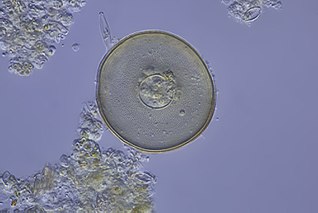
Arcella is a genus of testate amoebae in the order Arcellinida, usually found in freshwaters and mosses, and rarely in soils. A key characteristic of Arcella is the circular test with a hole on its center from where finger-like pseudopods emerge. It is one of the largest testacean genera.
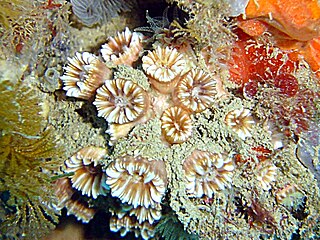
The Caryophylliidae are a family of stony corals found from the tropics to temperate seas, and from shallow to very deep water.
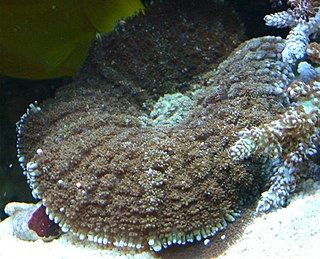
Rhodactis is genus of mushroom corals which are characterized by large individual polyps that are often reminiscent of a mushroom. Rhodactis are related to stony corals but do not produce a stony skeleton.

Goniopora, often called flowerpot coral, is a genus of colonial stony coral found in lagoons and turbid water conditions. Goniopora have numerous daisy-like polyps that extend outward from the base, each tipped with 24 stinging tentacles which surrounds a mouth.

Actinia is a genus of sea anemones in the family Actiniidae. Actinia display a rare form of heteromorphosis in which a cut inflicted on a specimen can develop into a second mouth.
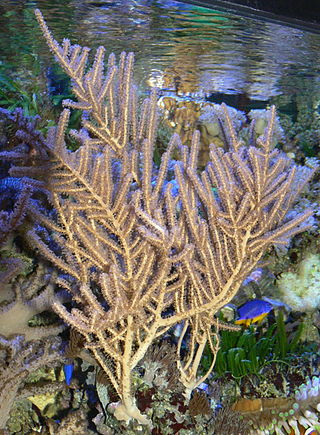
Gorgoniidae is a family of soft corals, a member of the subclass Octocorallia in the phylum Cnidaria. Nearly all the genera and species are native to the east and west coasts of America.
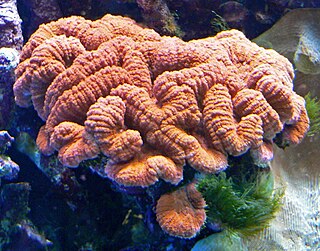
Lobophyllia, commonly called lobed brain coral or lobo coral, is a genus of large polyp stony corals. Members of this genus are sometimes found in reef aquariums.

Cladocora is a genus of corals in the order of stony corals.

Anemonia is a genus of sea anemones belonging to the family Actiniidae.

Merulinidae is a family of reef-building stony corals.
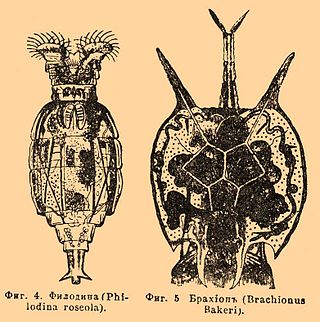
Philodina is a genus of rotifers belonging to the family Philodinidae.

Dissotrocha is a genus of rotifers belonging to the family Philodinidae. The species of this genus are found in Europe, Australia and North America.
Habrotrochidae is a family of rotifers belonging to the order Bdelloida.
Pleuretra is a genus of rotifers belonging to the family Philodinidae.

Philodina rugosa is species of rotifer in the family Philodinidae. There are currently 3 subspecies:

















